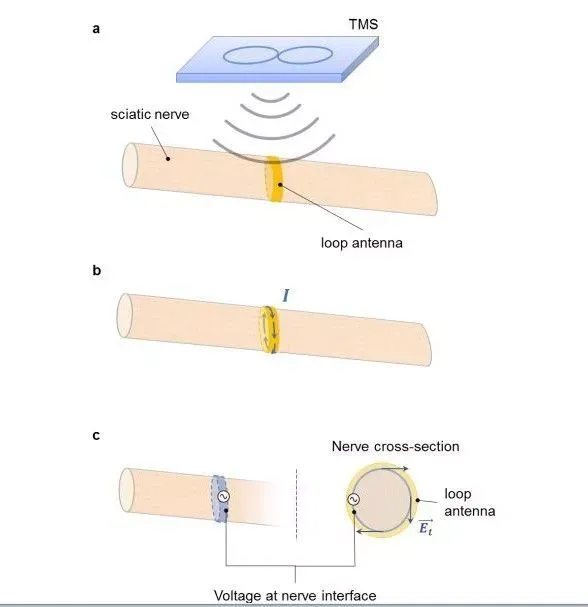"Electrical signals generated outside the body by transcranial stimulation helped to repair sciatic nerves divided into rates," say researchers.
The body's ability to repair damaged nerves is a mystery. For neurologists, it seems clear that damage to the central nervous system - the brain and spinal cord - cannot be repaired. However, damage to the nerves in the rest of the body - the peripheral nervous system - is a different matter.
Significant evidence suggests that the body can repair certain types of damage to peripheral nerves. But only in certain circumstances and often in limited ways. Therefore, new ways to reconnect the severed nerves and trigger repairs and regeneration are of considerable interest. That is why Ashour Sliow's work at Western Sydney University in Australia and some colleagues is important. They developed a new way to reconnect a severed nerve with a biodegradable scaffold and then electrically stimulate it using a magnetic field outside the body.
Just a pause before we continue, did you know that the Ninsaúde Apolo clinic and office management system is perfect for new clinics? Click here and discover exclusive advantages.
They say their technique is minimally invasive, unlike other nerve regeneration approaches, and can repair severed nerves in mice. In recent years, neurologists have found that a brief electrical stimulation can significantly improve the way nerves recover and reappear. But, there are challenges to improve this type of treatment. One is that the severed nerves are rewired and the sutures are a significant source of scarring and inflammation. Then there is the problem of applying electrical stimulation. This is usually done using a conductive band around the reconnected part of the nerve that is connected to a wire that extends outside the body.
This usually causes problems. Any invasive connection is prone to infection and any small pull on the wire can dislodge the band. In practice, the conduction band often migrates, which significantly reduces its therapeutic effectiveness.

"Repairing and electrically stimulating peripheral nerves with a non-invasive device is very challenging and current scientific and technological knowledge has not yet produced an effective system for combining and performing these two tasks together," says Sliow and colleagues.
They then took a different approach: they developed a band made of chitosan, a biodegradable material made from shrimp shells. The team links this directly to the nerve using a laser that does not damage nerve tissue. The chitosan band then acts as a scaffold for the nerve during the healing process. “This scaffolding is anchored to the fabric by a laser without sutures, thus exploring its photo-adhesive properties”, says Sliow.
Chitosan scaffolding also plays another role. The researchers integrated a gold band into the bioscaffold. This band has a diameter of about 1 millimeter and acts as a kind of radio antenna that can pick up electromagnetic signals generated outside the body.
"The idea is that these signals induce a chain in the gold band and this stimulates the nerve itself. "
To find out how well the so-called “graft antenna” works, the team used the device to stimulate and repair sciatic nerves in anesthetized Wistar rats. They stimulated the severed nerves using transcranial magnetic stimulation for 1 hour a week, for three months, using a pattern of signals known to trigger nerves.
They found that the sciatic nerves regenerated during this period and that the antenna was able to stimulate muscle activity during the period. Also, the graft antenna remained stable throughout and did not migrate during the experiment.
This is an interesting job with significant potential. The ability to repair nerves has benefited from supports that hold the nerve and electrical stimulation. But no one has figured out how to do these two things at the same time. So far.
Of course, there is work ahead. For example, the device needs to be compared in controlled tests to repairs made by sutures to quantify how much better it is. After that, trials will come in humans and there is much reason to be cautiously optimistic. "The graft antenna is stable on the body after implantation and can facilitate axon regeneration without any significant adverse effects", says the team.
Source: MIT Technology Review
